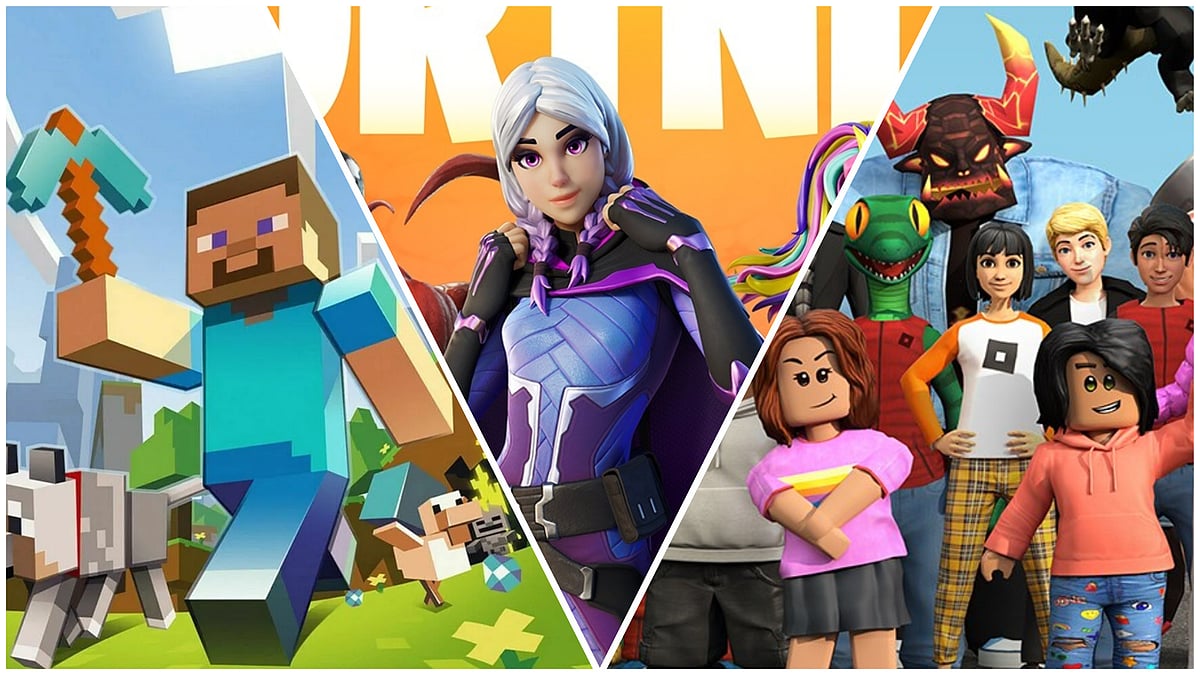The gaming industry is undergoing a fundamental transformation, with user-generated games competing directly against traditional video games for both player attention and a share of the $187.7 billion global gaming market. User-generated content (UGC) games are digital experiences created primarily by players or hobbyist developers using tools, editors, and platforms provided by larger companies.
Today's UGC platforms have evolved into massive economic ecosystems. Roblox generated $3.6 billion in revenue in 2024, while Epic Games paid $352 million directly to Fortnite creators that same year. These platforms now represent substantial market share, with Roblox alone accounting for approximately 1.9% of global gaming revenue.
What Are the Major UGC Platforms?
Roblox: The UGC Economic Powerhouse
Roblox stands as the most comprehensive UGC gaming platform globally, hosting over 14 million active experiences and attracting 82.9 million average daily active users. Its proprietary development engine, Roblox Studio, enables creators of all skill levels to build, script, and monetize their own games.
The platform's economic impact demonstrates the viability of creator-driven models: 24,500+ developers earned $922.8 million collectively through the Developer Exchange program in 2024. However, supporting this ecosystem requires significant investment—Roblox spent $915.4 million on moderation infrastructure and trust & safety measures, employing thousands of human moderators alongside AI-based systems to manage content at scale.
Minecraft: The Enduring Sandbox Pioneer
Minecraft pioneered the sandbox UGC movement, establishing the foundation for player-driven creativity that defines today's landscape. With 62 million monthly active users and $220 million in revenue for 2024, it continues demonstrating the longevity of community-created content.
The Minecraft ecosystem extends far beyond the base game through servers, custom maps, and downloadable content created by both hobbyists and professional teams. The Minecraft Marketplace provides a curated storefront where vetted creators sell skins, worlds, and add-ons to a global audience, with Microsoft ensuring security and quality standards.
Fortnite Creative: The Brand Integration Platform
Fortnite Creative represents Epic Games' strategic entry into UGC, offering players sophisticated tools to design custom islands, game modes, and interactive experiences. The platform has rapidly evolved to support advanced scripting, custom assets, and comprehensive creator monetization.
In 2024, Fortnite Creative hosted nearly 200,000 user-created islands with a 15% increase in average daily player count. Major brands including Balenciaga, Ralph Lauren, and Nike have leveraged the platform for marketing campaigns.
Platform Performance Comparison (2024)
Here's a comprehensive comparison of the major UGC platforms:
| Platform | Revenue | Monthly Active Users | Developer Payouts | Primary Strength |
| Roblox | $3.6B | 82.9M daily | $922.8M | Complete development ecosystem |
| Minecraft | $220M | 62M | Not disclosed | Established modding community |
| Fortnite Creative | Part of Epic's $5.7B | Not disclosed | $352M | Brand partnerships & marketing |
Differences Between UGC Games and Traditional Games
Here is a comparison between the two types of games:
| Category | User-Generated Content Games | Traditional Video Games |
| Who creates the games? | Players and community members using platform tools | Professional studios or independent developers |
| Examples | Roblox, Minecraft, Fortnite Creative | Final Fantasy, Call of Duty, Spider-Man |
| Development tools | In-game editors, scripting kits, modification tools | Proprietary engines, professional software |
| Content type | Vast, experimental, community-driven | Curated, polished, genre-specific |
| Quality control | Varies widely; platform moderation required | High standards with quality assurance and testing |
| Distribution | Within platform ecosystems | Digital stores, physical copies |
| Monetization model | Revenue sharing, in-game purchases, virtual goods | Upfront sales, downloadable content, microtransactions |
| Revenue drivers | Ongoing user activity and trends | Updates, sequels and downloadable content |
| Key disadvantages | Quality, moderation and intellectual-property issues | High development costs, slower iteration, financial risk |
The UGC revolution has fundamentally altered gaming economics. Platforms like Roblox now compete directly with major publishers, while traditional studios increasingly incorporate user-generated elements into their titles. Epic Games' total revenue of $5.7 billion in 2024 demonstrates how companies can successfully balance traditional game development with creator platform operations.
The convergence of these models suggests a future where the distinction between UGC and traditional games becomes increasingly irrelevant. Success will depend on understanding player expectations for creativity, quality, and community engagement rather than adherence to traditional development paradigms.
Both approaches offer distinct value propositions: UGC platforms provide accessibility and rapid innovation, while traditional games deliver narrative depth and technical sophistication. The gaming industry's continued growth (and the success of hybrid approaches) indicates that players want both, creating opportunities for companies that can effectively bridge these worlds.

